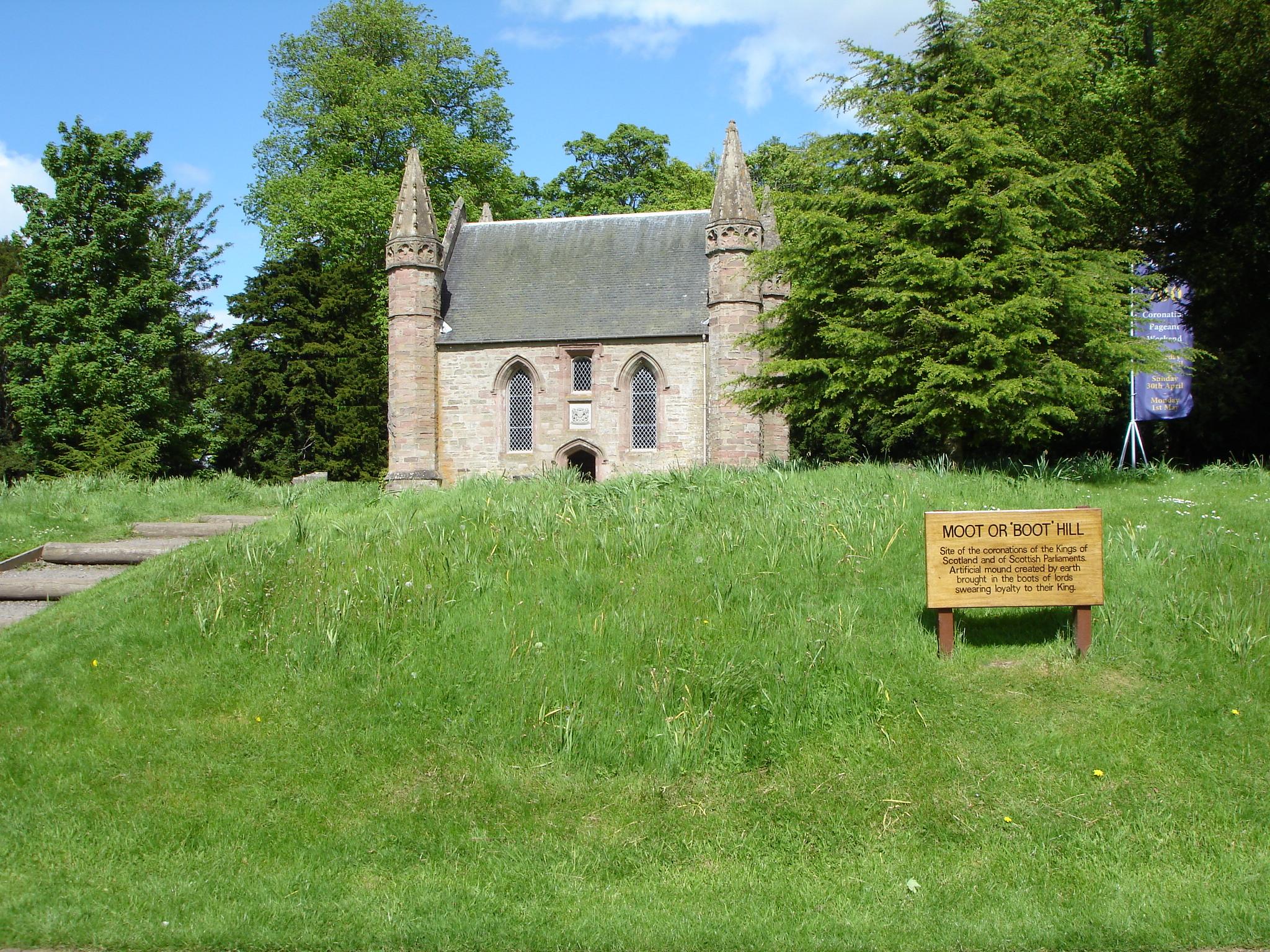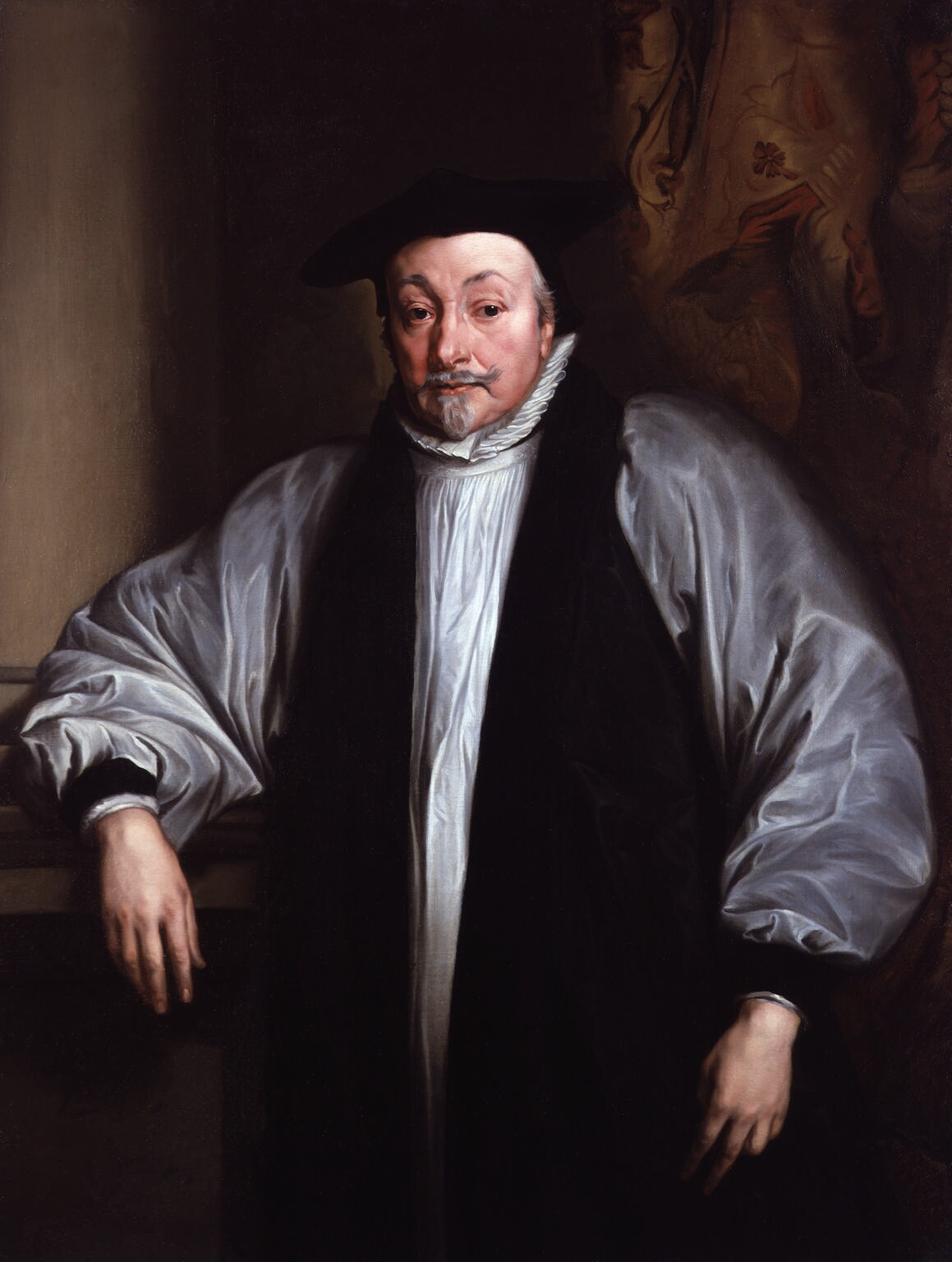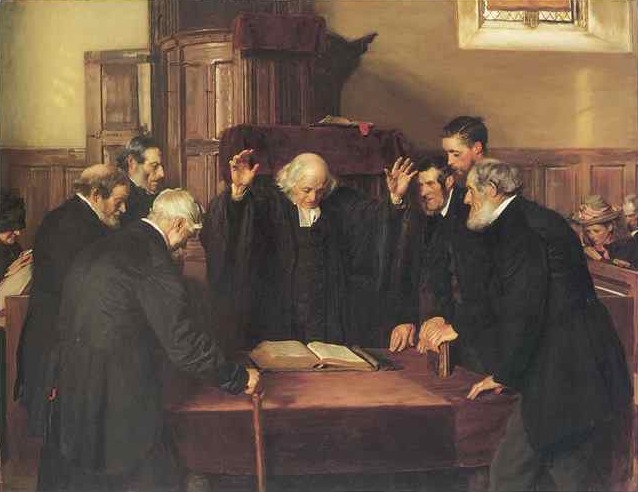|
Treaty Of Ripon
The Treaty of Ripon was an agreement signed by Charles I, King of England, Scotland, and Ireland, and the Scottish Covenanters on 28 October 1640, in the aftermath of the Second Bishops' War. The Bishops' Wars were fought by the Covenanters to oppose attempts by Charles to bring the Church of Scotland closer to the Church of England, specifically in relation to treating the king as the source of spiritual power and the introduction of bishops into government. Victory at the Battle of Newburn in August 1640 left the Scots in control of Northumberland, County Durham, and Newcastle upon Tyne. Seeking to bypass Parliament, Charles assembled the Great Council of Peers for the first time in a century. Although the Council agreed to negotiate, they insisted Parliament approve the terms; until then, the Scots were allowed to occupy Northumberland and Durham, and were paid expenses of £850 a day. Although humiliating, Charles was forced to accept these terms. This forced Charles to ... [...More Info...] [...Related Items...] OR: [Wikipedia] [Google] [Baidu] |
Bishops' Wars
The 1639 and 1640 Bishops' Wars () were the first of the conflicts known collectively as the 1639 to 1653 Wars of the Three Kingdoms, which took place in Scotland, England and Ireland. Others include the Irish Confederate Wars, the First and Second English Civil Wars, the Anglo-Scottish war (1650–1652), and the Cromwellian conquest of Ireland. The wars originated in disputes over governance of the Church of Scotland or kirk that began in the 1580s, and came to a head when Charles I attempted to impose uniform practices on the kirk and the Church of England in 1637. These were opposed by most Scots, who supported a Presbyterian church governed by ministers and elders. Signatories of the 1638 National Covenant pledged to oppose such "innovations", and were collectively known as Covenanters. Although the Covenant made no reference to Bishops, they were seen as instruments of royal control and in December were expelled by the General Assembly of the Church of Scot ... [...More Info...] [...Related Items...] OR: [Wikipedia] [Google] [Baidu] |
Protestant Reformation
The Reformation (alternatively named the Protestant Reformation or the European Reformation) was a major movement within Western Christianity in 16th-century Europe that posed a religious and political challenge to the Catholic Church and in particular to papal authority, arising from what were perceived to be Criticism of the Catholic Church, errors, abuses, and discrepancies by the Catholic Church. The Reformation was the start of Protestantism and the split of the Western Church into Protestantism and what is now the Roman Catholic Church. It is also considered to be one of the events that signified the end of the Middle Ages and the beginning of the early modern period in Europe.Davies ''Europe'' pp. 291–293 Prior to Martin Luther, there were many Proto-Protestantism, earlier reform movements. Although the Reformation is usually considered to have started with the publication of the ''Ninety-five Theses'' by Martin Luther in 1517, he was not excommunicated by Pope Leo X ... [...More Info...] [...Related Items...] OR: [Wikipedia] [Google] [Baidu] |
Archibald Campbell, 1st Marquess Of Argyll
Archibald Campbell, Marquess of Argyll, 8th Earl of Argyll, Chief of Clan Campbell (March 160727 May 1661) was a Scottish nobleman, politician, and peer. The ''de facto'' head of Scotland's government during most of the conflict of the 1640s and 50s known as the Wars of the Three Kingdoms, he was a major figure in the Covenanter movement that fought for the maintenance of the Presbyterian religion against the Stuart monarchy's attempts to impose episcopacy. He is often remembered as the principal opponent of the royalist general James Graham, 1st Marquess of Montrose. Early life Archibald Campbell, Marquess of Argyll was the eldest son of Archibald Campbell, 7th Earl of Argyll, by his first wife Agnes Douglas daughter of William Douglas, 6th Earl of Morton, and was educated at St Andrews University, where he matriculated on 15 January 1622. He had early in life, as Lord Lorne, been entrusted with the possession of the Argyll estates when his father renounced Protestantis ... [...More Info...] [...Related Items...] OR: [Wikipedia] [Google] [Baidu] |
National Covenant
The National Covenant () was an agreement signed by many people of Scotland during 1638, opposing the proposed reforms of the Church of Scotland (also known as '' The Kirk'') by King Charles I. The king's efforts to impose changes on the church in the 1630s caused widespread protests across Scotland, leading to the organisation of committees to coordinate opposition to the king. Facing royal opposition to the movement, its leaders arranged the creation of the National Covenant, which was designed to bolster the movement by tapping into patriotic fervour and became widely adopted throughout most of Scotland. The Covenant opposed changes to the Church of Scotland, and committed its signatories to stand together in the defence of the nation's religion. Charles saw this as an act of rebellion against his rule, leading to the Bishops' Wars, the result of which required him to call an English Parliament. This parliament passed acts limiting the king's authority, and these disputes ulti ... [...More Info...] [...Related Items...] OR: [Wikipedia] [Google] [Baidu] |
Book Of Common Prayer
The ''Book of Common Prayer'' (BCP) is the name given to a number of related prayer books used in the Anglican Communion and by other Christianity, Christian churches historically related to Anglicanism. The original book, published in 1549 in the reign of King Edward VI of England, was a product of the English Reformation following the break with Catholic Church, Rome. The work of 1549 was the first prayer book to include the complete forms of service for daily and Sunday worship in English. It contained Morning Prayer (Anglican), Morning Prayer, Evening Prayer (Anglican), Evening Prayer, the Litany, and Holy Communion and also the occasional services in full: the orders for Baptism, Confirmation, Marriage, "Anointing of the Sick, prayers to be said with the sick", and a funeral service. It also set out in full the "propers" (that is the parts of the service which varied week by week or, at times, daily throughout the Church's Year): the introits, collects, and epistle and go ... [...More Info...] [...Related Items...] OR: [Wikipedia] [Google] [Baidu] |
Parliament Of Scotland
The Parliament of Scotland ( sco, Pairlament o Scotland; gd, Pàrlamaid na h-Alba) was the legislature of the Kingdom of Scotland from the 13th century until 1707. The parliament evolved during the early 13th century from the king's council of bishops and earls, with the first identifiable parliament being held in 1235 during the reign of Alexander II, when it already possessed a political and judicial role. A unicameral institution, for most of its existence the Parliament consisted of the three estates of clergy, nobility, and the burghs. By the 1690s it comprised the nobility, the shires, the burghs, and various officers of state. Parliament gave consent for the raising of taxation and played an important role in the administration of justice, foreign policy, war, and the passing of a broad range of legislation. Parliamentary business was also carried out by "sister" institutions, such as General Councils or Conventions of Estates, which could both carry out much busi ... [...More Info...] [...Related Items...] OR: [Wikipedia] [Google] [Baidu] |
Book Of Discipline (Church Of Scotland)
The ''Book of Discipline'' refers to two works regulative of ecclesiastical order in the Church of Scotland, known as ''The First Book of Discipline'' (1560) and ''The Second Book of Discipline'' (1578), drawn up and printed in the Scottish Reformation. The first was drafted by a committee of "six Johns", including leading reformer John Knox. It set out a system of Presbyterian polity on the Geneva model, but the lack of funds meant its programme of clerical organisation and education was largely abandoned. The second book was adopted after the forced abdication of Mary Queen of Scots and was much more clearly Presbyterian in outlook. It placed church supervision fully in the hands of groups of elected church leaders in presbyteries. Background In 1560, following the death of the regent Mary of Guise, who ruled on behalf of her daughter Mary, Queen of Scots who was in France and the defeat of French forces at the Siege of Leith, the reform-minded Lords of the Congregation were in ... [...More Info...] [...Related Items...] OR: [Wikipedia] [Google] [Baidu] |
Laudianism
Laudianism was an early seventeenth-century reform movement within the Church of England, promulgated by Archbishop William Laud and his supporters. It rejected the predestination upheld by the previously dominant Calvinism in favour of free will, and hence the possibility of salvation for all men. It is probably best known for its impact on the Anglican high church movement and its emphasis on liturgical ceremony and clerical hierarchy. Laudianism was the culmination of the move towards Arminianism in the Church of England, but was neither purely theological in nature, nor restricted to the English church. Theology The Elizabethan Settlement of 1559, which set the tone for English religious policy until the rise of Laudianism, was theologically a mixture of Catholic doctrine, Calvinism and some minor elements from Lutheranism, without officially adhering to any one of them. Although the doctrine of predestination was to be handled with care at a parish level in order to offse ... [...More Info...] [...Related Items...] OR: [Wikipedia] [Google] [Baidu] |
Puritans
The Puritans were English Protestants in the 16th and 17th centuries who sought to purify the Church of England of Catholic Church, Roman Catholic practices, maintaining that the Church of England had not been fully reformed and should become more Protestant. Puritanism played a significant role in English history, especially during the Protectorate. Puritans were dissatisfied with the limited extent of the English Reformation and with the Church of England's toleration of certain practices associated with the Roman Catholic Church. They formed and identified with various religious groups advocating greater purity of worship and doctrine, as well as personal and corporate piety. Puritans adopted a Reformed theology, and in that sense they were Calvinists (as were many of their earlier opponents). In church polity, some advocated separation from all other established Christian denominations in favour of autonomous gathered churches. These English Dissenters, Separatist and Indepe ... [...More Info...] [...Related Items...] OR: [Wikipedia] [Google] [Baidu] |
James VI And I
James VI and I (James Charles Stuart; 19 June 1566 – 27 March 1625) was King of Scotland as James VI from 24 July 1567 and King of England and Ireland as James I from the union of the Scottish and English crowns on 24 March 1603 until his death in 1625. The kingdoms of Scotland and England were individual sovereign states, with their own parliaments, judiciaries, and laws, though both were ruled by James in personal union. James was the son of Mary, Queen of Scots, and a great-great-grandson of Henry VII, King of England and Lord of Ireland, and thus a potential successor to all three thrones. He succeeded to the Scottish throne at the age of thirteen months, after his mother was compelled to abdicate in his favour. Four different regents governed during his minority, which ended officially in 1578, though he did not gain full control of his government until 1583. In 1603, he succeeded Elizabeth I, the last Tudor monarch of England and Ireland, who died childless. H ... [...More Info...] [...Related Items...] OR: [Wikipedia] [Google] [Baidu] |
Ministers And Elders Of The Church Of Scotland
A Church of Scotland congregation is led by its minister and elders. Both of these terms are also used in other Christian denominations: see Minister (Christianity) and Elder (Christianity). This article discusses the specific understanding of their roles and functions in the Scottish Church. Terminology The Greek term , used in the New Testament as a designation for the leaders of the Early Church (e.g. Acts 11.30), has three different equivalents in English: ''elder'', ''presbyter'' and ''priest''. ''Priest'' is the oldest, a borrowing into Old English via Latin, ''elder'' (first attested 1526) is a translation of the underlying meaning of the Greek word, and ''presbyter'' (1597) is learned correction of the loan-word. However, the semantics of ''priest'' are complicated by the fact that it is traditionally used also as the translation of a different New Testament Greek word, , which refers to those who perform sacrificial rites in the Jerusalem temple and in pagan te ... [...More Info...] [...Related Items...] OR: [Wikipedia] [Google] [Baidu] |
Presbyters
Presbyter () is an honorific title for Christian clergy. The word derives from the Greek ''presbyteros,'' which means elder or senior, although many in the Christian antiquity would understand ''presbyteros'' to refer to the bishop functioning as overseer. The word Presbyter is also mentioned in the New Testament. In modern Catholic and Orthodox usage, ''presbyter'' is distinct from ''bishop'' and synonymous with ''priest''. In predominant Protestant usage, ''presbyter'' does not refer to a member of a distinctive priesthood called ''priests,'' but rather to a minister, pastor, or elder. Etymology The word ''presbyter'' etymologically derives from Greek ''πρεσβύτερος'' (''presbyteros''), the comparative form of ''πρέσβυς'' (''presbys''), "old man". However, while the English word priest has presbyter as the etymological origin, the distinctive Greek word (Greek ἱερεύς ''hiereus'') for "priest" is never used for presbyteros/episkopos in the New Testament ... [...More Info...] [...Related Items...] OR: [Wikipedia] [Google] [Baidu] |


.jpg)






